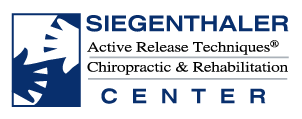What To Do If You Are Injured
PART 1: COMMON ATHLETIC INJURIES As the intensity of your workouts increase so to will your risk of injury. The human body is very complex and many times many different structures can be damaged. Injuries can occur to muscles, ligaments, tendons and joints of the entire body. In order to decrease your injury time away from the gym, it is important that you understand what types of injuries can occur and what to do to quickly and properly heal. This allow s you to get back to your regular routine and to achieve your workout goals. MUSCLES / TENDONS / LIGAMENTS MUSCLE – the human body has over 600 different muslce that make up approximately 40% of your body weight. – is a tissue with at least 2 attachments conisisting of fibres organized into bands and bundles that...
Read MoreYour First Visit
Patient Background Forms Upon arrival, we’ll ask you to fill out new patient paperwork. We’ll also ask questions about current medication and any medical testing (x-rays, MRI’s,) that you may have had. Consultation We’ll discuss your injury, health related problems, and concerns, and offer potential treatment options. You’ll talk with one of our doctors to determine how Chiropractic and Active Release Techniques can meet your health care needs. Examination and Treatment After your consultation, our doctors will perform a chiropractic examination and treatment techniques. After Your Visit We’ll schedule a follow up appointment. We may also recommend at home therapy including exercises and / or stretches. Click here to learn more about post-treatment recommendations. ...
Read MoreHelpful Hints After Treatment
1. Ice area of discomfort/pain for 20 minutes on 60 minutes off. Do up to 4 cycles or until discomfort/pain subsides. After applying ice for up to 20 minutes, perform range of motion stretches. The amount of time for ice application depends on the thickness of the involved tissue. In general, wrists and ankles are iced for 10 minutes on 60 minutes off, the neck, knees or shoulders get iced for 15 minute intervals,and the thoracic and lumbar spine are iced for 20 minute intervals. 2. Gently stretch problem area – work out the tight musculature. 3. Drink plenty of water – this will help remove the toxins building up in the body. 4. Rest at least 1 hour after this. Lie on your back with your knees bent. Use cervical pillow for proper neck support. 5. A WARM...
Read More